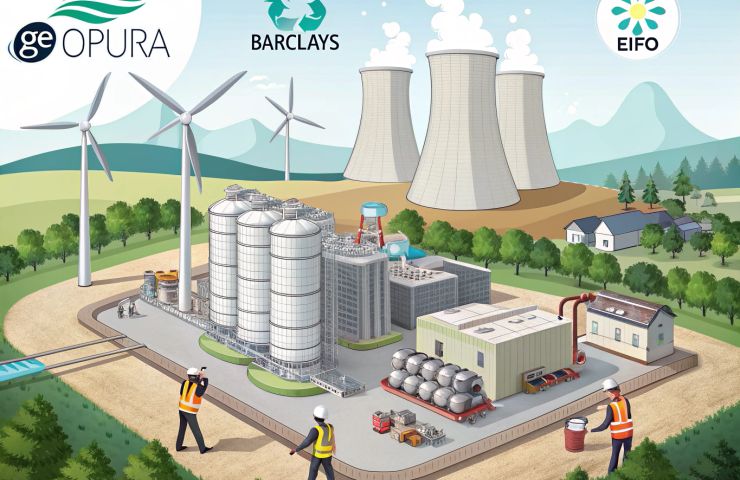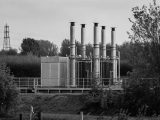
GeoPura Secures £27M Loan to Scale Green Hydrogen Production at Former UK Coal Plant
October 7, 2025GeoPura burst onto the scene in 2019 and quickly climbed the ranks to become one of the UK’s top green hydrogen producers. Fast-forward to 6 October 2025, and they’ve landed a game-changing £27 million green loan facility to supercharge both their domestic hydrogen production operations and an international electrolysers support hub. Barclays spearheaded the deal, with Denmark’s Export- and Investment Fund (EIFO) backing it up with a hefty £16.5 million guarantee. With demand for clean power solutions and rock-solid energy security on the rise, this partnership shows just how far the hydrogen infrastructure sector has come—and how much further it’s about to go.
Financing Package and Strategic Partnership
Here’s how the financing breaks down:
• A £27 million green loan arranged by Barclays, tapping into its Sustainable and Transition Finance expertise under Group Head Daniel Hanna.
• A £16.5 million export guarantee from EIFO, marking its first pure-play international Power-to-X commitment.
• A joint venture with JG Pears to launch the HyMarnham Power project.
Together, these pieces show how public and private capital can come together to de-risk big energy-transition bets and attract institutional investors.
Reviving the East Midlands: HyMarnham Power
The HyMarnham site sits on the footprint of an old coal-fired station in the East Midlands—a region once defined by mining and thermal generation. Picked under the UK Government’s Hydrogen Allocation Round 1 (HAR1), it’ll house high-capacity electrolysers that split water into hydrogen and oxygen using renewable electricity. Scheduled for commercial operations by November 2025, the plant will churn out thousands of tonnes of low-carbon hydrogen each year, feeding industrial steam, grid-balancing services, and backup power markets. By repurposing existing infrastructure instead of building on a greenfield, GeoPura is racing to delivery.
Hydrogen Power Unit Technology
At the heart of GeoPura’s lineup are its Hydrogen Power Units (HPUs), developed with Siemens Energy. These modular, containerized systems take in hydrogen and spit out electricity, with only water and heat as byproducts. They range from 50 kW setups for small events right up to 50 MW grid-support installations. Compared to diesel generators, HPUs deliver zero local air pollutants, whisper-quiet operation, instantaneous load response, and razor-sharp power control. GeoPura has already showcased these units at the BMW PGA Tour, on film sets, and as data-center backup power—validating remote monitoring and extended maintenance cycles. By 2033, they aim to deploy over 3,600 HPUs and displace more than ten million tonnes of CO₂, illustrating how fuel cell technology is maturing fast.
Danish Hub: A European Electrolyser Support Centre
On the other side of the North Sea, GeoPura’s setting up a dedicated hub in Denmark to coordinate spare parts, maintenance, calibration, and technical training. Over 50 Danish sub-suppliers—from precision component shops to engineering consultancies—will chip in. This hub doubles as an OEM-certified training centre and an R&D testbed for next-gen electrolyser components, cementing Denmark’s role as a European hydrogen tech leader and creating skilled jobs in both countries.
Policy Levers and Market Dynamics
Deals like this highlight how targeted fiscal levers can pull in private investment for emerging clean technologies. HAR1 provided offtake security and development grants to first movers, while Barclays’ green loan—aligned with its science-based targets—signals true lender confidence in hydrogen. For EIFO, branching into green hydrogen complements its offshore-wind pedigree. And the HyMarnham venture lays out a clear financing template for future rounds like HAR2. By blending government backing, commercial green loans, and export guarantees, developers can tackle early-stage risks and draw in big institutional cash.
Economic and Environmental Ripple Effects
You can already feel HyMarnham’s impact rippling through local economies. In the East Midlands, plant operations, logistics, and maintenance roles will sustain hundreds of workers, offsetting declines in traditional industries. On the environmental side, swapping out diesel gensets for HPUs at construction sites, data centres, and events will dramatically cut emissions. Meanwhile, large-scale hydrogen offtake for industrial heat can shrink carbon footprints in manufacturing and utilities.
Broader Hydrogen Infrastructure Outlook
HyMarnham is more than a standalone plant; it’s a blueprint for converting legacy energy assets into hubs for clean hydrogen. As electrolyser costs fall—thanks to improved materials and mass production—and fuel cell technology performance climbs, similar brownfield conversions will pop up across Europe. We’re on the cusp of a pan-European hydrogen infrastructure linking production hubs to industrial clusters and export terminals.
What’s Next?
Looking ahead, everyone’s watching to see if HyMarnham hits its HAR1 milestones, how the Danish hub accelerates spare-parts delivery, and whether surplus hydrogen can feed nearby industries via new pipelines. Other developers will likely copy this blended-financing playbook. The era of hydrogen as a cornerstone of sustainable energy portfolios is here—and it’s charging forward at pace.



 With over 15 years of reporting hydrogen news, we are your premier source for the latest updates and insights in hydrogen and renewable energy.
With over 15 years of reporting hydrogen news, we are your premier source for the latest updates and insights in hydrogen and renewable energy.